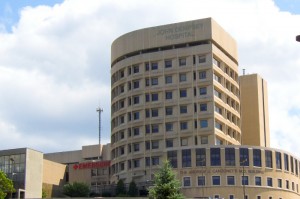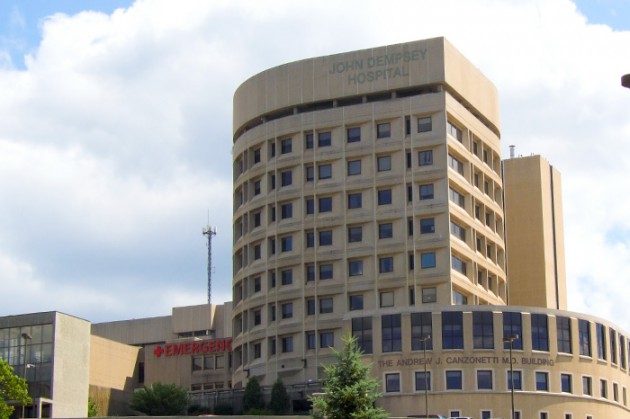
John Dempsey Hospital is the cornerstone of its community – caring for residents 24 hours a day, seven days a week. Accessible, high quality hospital care is just as necessary for quality of life as public schools, safe streets, transportation, public utilities, and police protection. Connecticut hospitals also serve as critical economic engines for their communities and the state, providing enormous benefits that drive growth in the health and medical fields as well as numerous other industries. In fact, John Dempsey Hospital makes a tremendous impact on the financial health of the local community and state.
John Dempsey Hospital spends millions of dollars each year on staff, medical supplies and food, and equipment and facility updates. These dollars have a “ripple effect” as they move through the larger economy, generating additional jobs and spending in the community, as well as large sums of tax revenue used to fund state and federal programs.
In total, John Dempsey Hospital had a direct economic impact on the community of more than $582,585,000.
John Dempsey Hospital Provides Jobs in the Community
John Dempsey Hospital employs 1,300 people, with a total payroll of $137,787,000. Hospital payroll expenditures serve as an important economic stimulus, creating and supporting jobs throughout the local and state economies.
Dollars earned by John Dempsey Hospital employees and spent on groceries, clothing, mortgage payments, rent, etc., generate approximately $148,740,000 in economic activity and create an additional 1,300 jobs for the local economy.
John Dempsey Hospital Is a Major Purchaser of Goods and Services
Each year, John Dempsey Hospital spends about $136,498,000 on the goods and services it needs to provide health care – e.g., medical supplies, electricity for its buildings, and food for patients. Funds spent to buy goods and services flow from the hospital to businesses and then ripple throughout the economy. These dollars generate a total of approximately $147,349,000 for the local economy.
Funds spent by John Dempsey Hospital on buildings and equipment total $5,872,000. This expenditure generates approximately $6,339,000 in total for the local economy per year.
John Dempsey Hospital Construction
Construction activity at the University of Connecticut Health Center affects the local economy, from the convenience store located down the street to the insurance agent providing policies for the contractors and other companies working on the project. Expansion of John Dempsey Hospital, which includes construction of a new hospital tower, is among several construction projects totaling approximately $837 million currently under way on the UConn Health Center Campus. These projects generate local jobs and revenue and result in improved health care delivery for the community.
Ensuring the Financial Health of Connecticut’s Hospitals
Generations of families have come to rely on John Dempsey Hospital to care for them in sickness and in health. It is critical that John Dempsey Hospital and all Connecticut hospitals be financially strong and stable. In addition to its caregiving role, John Dempsey Hospital is an important part of the local economy and the area’s economic development strategies. Investing in health care is a good investment for the state.
Hospitals have smart, effective solutions that offer a win for everyone: better access to providers for patients, lower costs for the state, and better reimbursement rates for providers. Let’s work together to keep Connecticut hospitals strong and stable.
NOTE: This analysis is based on the statewide multipliers from the Regional Input-Output Modeling System (RIMS II), developed by the Bureau of Economic Analysis of the U.S. Department of Commerce. It uses data from the 2011 Medicare cost report. RIMS II provides an accounting of “inputs” purchased and “outputs” sold by an industry in the state. The spending of one industry will have several rounds of ripple influence throughout the state economy—this is known as the multiplier effect. RIMS II regional multipliers measure both the direct and indirect impact on the state economy from a specific industry. The number of jobs is based on full-time equivalents.
The Connecticut Hospital Association contributed to this report.
Follow the UConn Health Center on Facebook, Twitter and YouTube.



